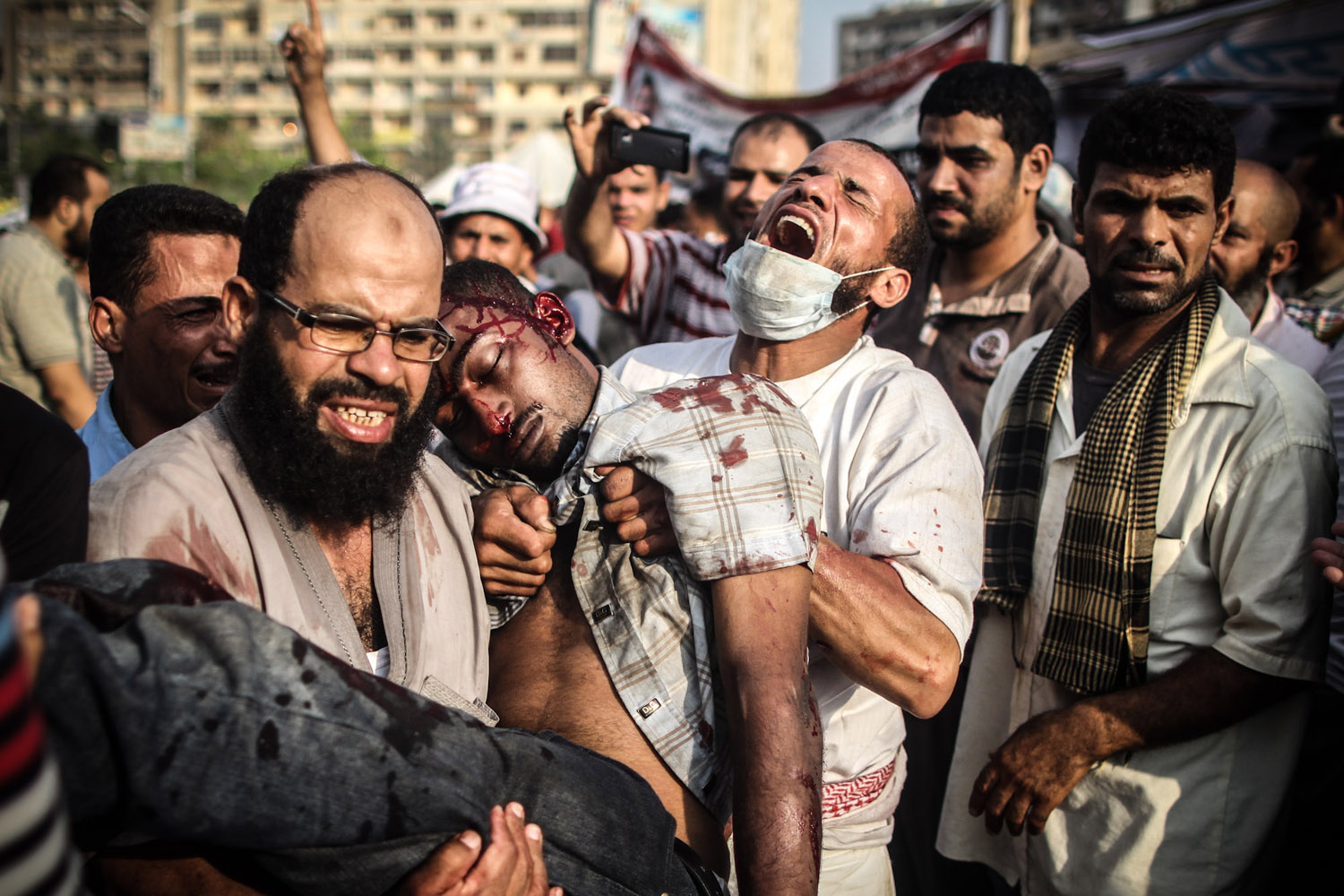
Mosa’ab Elshamy is a 23-year-old freelance photographer in Cairo. Studying to be a pharmacist when the Egyptian revolution broke out in 2011, Elshamy joined the protests with his camera as a citizen journalist, covering the weekly demonstrations and clashes around Tahrir Square. Since then, the self-taught photographer’s work has been published by EPA, the Economist and Harper’s.
As the Egyptian police began firing on demonstrators in Cairo’s Rabaa Square, Elshamy documented the aftermath. He spoke with TIME’s Ashraf Khalil about the terror and trauma he witnessed this weekend.
At around 1:30 in the morning on July 27, I was in downtown Cairo when word first came through on social media that clashes had begun between security forces and the Muslim Brotherhood supporters of deposed president Mohammed Morsi.
It wasn’t much of a surprise; I was already expecting some sort of violence there — if not on that night, then very soon.
The Brotherhood had been gathered in the thousands for more than a month — even before Morsi was deposed by the military on July 3 — and their open-ended sit-in was clearly beginning to test the patience of the Army. Defense Minister Abdel Fatah Al-Sissi had called for mass rallies around the country that day to show popular support for the military and the public green light to directly confront the Brotherhood.
Both sides were deeply entrenched, and the Brotherhood sit-in was under continuous threat of dispersal. It was only a matter of time.
I arrived on the scene by taxi at around 2:15. The air was already choked with tear gas, and I had left my gas mask at home. I was behind the police lines as members of Central Security — Egypt’s busy black-clad riot police — battled the Morsi supporters along a large multi-lane stretch of Nasr Street.
The police prevented me and other journalists from approaching too closely. From a distance, I could see both officers and people in civilian clothes fighting the Brotherhood cadres. At least two of the civilians had handguns, but I didn’t think they were plain-clothed security officers. They genuinely seemed — to me, at least — to be neighborhood residents fighting alongside the police.
Unable to get through the police cordon, I took another cab and approached the Brotherhood sit-in from a different direction. Much like Tahrir Square, the area around the Rabaa Adaweya Mosque has multiple entrances and access points; it’s a difficult place to simply seal up.
The minute I arrived, I could sense the whole sit-in was on major alert. Everybody was awake and the speaker on the stage was shouting prayers, asking God’s protection for the men fighting. Some were rushing towards the front, others were ferrying the wounded back or creating large lanes through the crowds so ambulances could pass through. Everybody seemed to be doing something.
As I approached the front lines, all I could see were huge clouds of tear gas. It was continuous gunfire. I know from experience the difference between the sound of rubber bullets and live ammunition and this was live ammunition. I know that sound by heart.
First I needed to assess whether it was possible for me to work in these conditions. This assessment includes a set of factors like the size of the battle zone, the lighting, escape routes and opportunities for shelter. In this case, all of these factors were bad.
In previous Cairo street clashes I had covered — such as the Mohammed Mahmoud Street clashes in November 2011 — you were dealing with a tiny enclosed space like a few hundreds meters of street. There were side alleys to duck down and cars or buildings to hide behind.
This was completely different — there was nowhere to take cover. The only direction to run was backwards, exposing your back to the people shooting at you. You couldn’t really tell where the fire was coming from. It was very, very frightening.
I decided to come back at dawn and headed deeper into the crowds to visit the field hospital — housed in one of the mosque’s social halls, which normally host weddings or funerals. It was around 3:30 am. The entire scene was absolute chaos. Everybody was screaming, and there was a shortage of beds. Outside, hundreds of relatives of the dead and wounded were desperately trying to get in.
I saw a man die in front of me. He was shaking and then froth came out of his mouth and he went limp. And the doctor just said, ‘martyr,’ and they carried the body off to another room.
I tried to photograph as much as I could while staying out of people’s way. Sometimes someone would yell at me to get out of there. But others would say they wanted journalists there to witness this. Even some of the nurses were taking pictures and video. The Muslim Brotherhood wanted to document this.
People were constantly carrying in fresh wounded and shouting out “bones” or “surgery” to alert the relevant medical teams. The volunteer doctors were extremely organized. They all had badges or lanyards declaring their specialization and role: ambulance, documentation, bones, surgery, and pharmacy. You could tell from their level of organization that they had been preparing for this.
At around 5:30 am, the situation was light enough outside that I felt safer heading to the front lines. There were still huge clouds of white tear gas, mixing with the black smoke from burning tires.
The Brotherhood cadres were desperately fortifying their positions, pulling up hexagon-shaped sidewalk paving stones and erecting barriers. I looked closely at what kind of weaponry the Brothers had. Maybe there were some people on the Brotherhood side with guns, especially during the night when the clashes were more intense, but the only weapons I saw with my own eyes were rocks, fireworks and people throwing tear gas canisters back at police.
I vividly recall seeing a man fall from a gunshot wound to the head. I literally saw the fountain of blood from his head. He wasn’t even up at the battle front, standing at least 100 meters behind the lines.
At 6:30 am, there was a strange lull. A huge burst of gunfire stopped both police and protestors in their tracks. A group of uniformed soldiers had emerged from behind the parade stand; nobody knew they were there before. They stood on the viewing stand and fired into the air.
The crowds erupted, believing that the Army had come to save them at the last minute. I heard people shouting, “The Army is shooting at the police!” People started celebrating. Some were claiming that the Army had defected to the Brotherhood’s side. I saw men crying from happiness. It was clear how desperate the Brothers were to have someone join their side and save them.
The lull lasted maybe 15 minutes, and then the Army soldiers left and the police started again with the shooting and tear gas. I still can’t make sense of this brief military intervention.
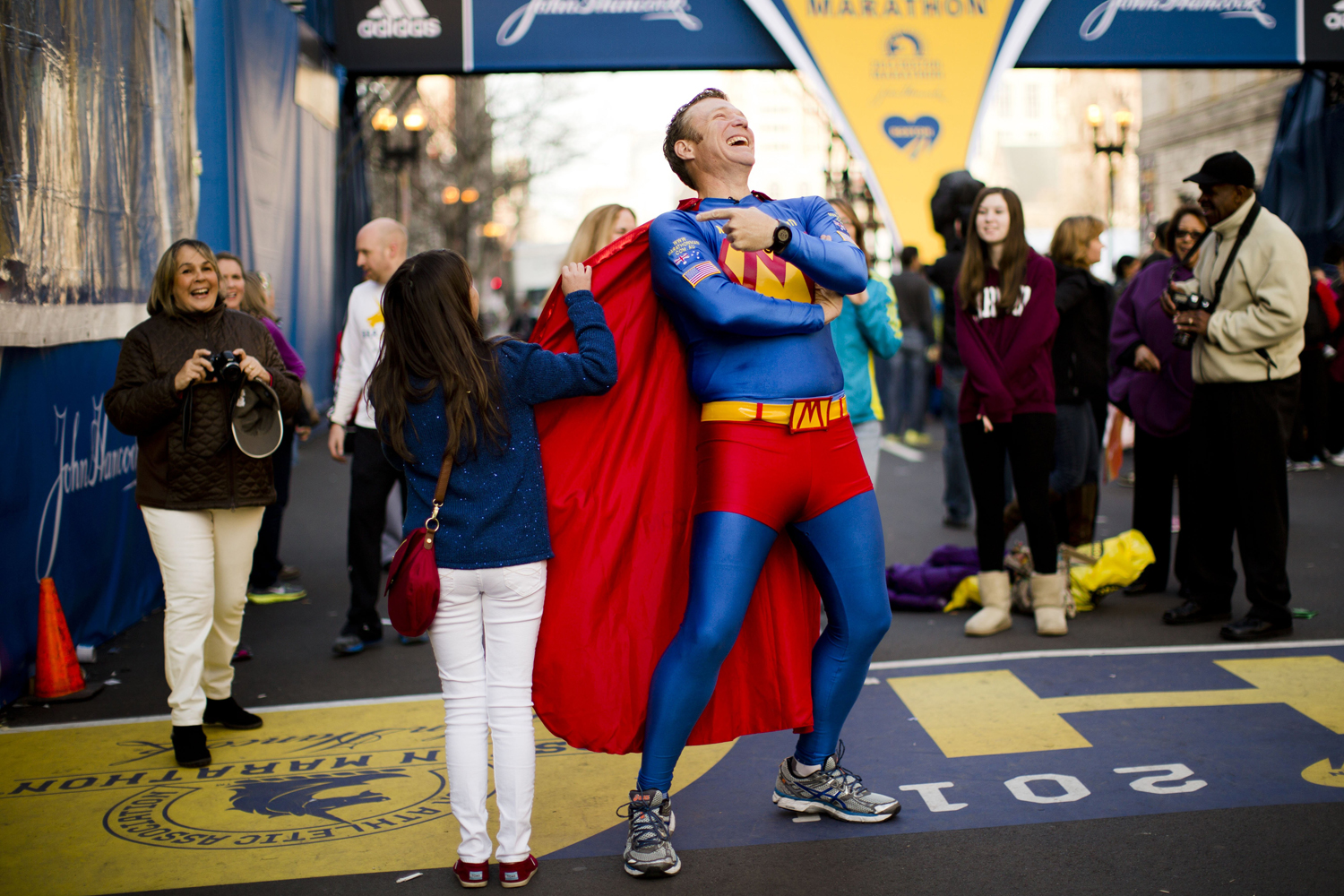
At around 8:30 am, I returned to the main sit-in and visited the makeshift morgue. I saw at least 20 bodies in all wrapped in white sheets and at least four more arrived while I was there. My only experience of being in a morgue with this many bodies was in the Gaza Strip during the Israeli siege last year. I wouldn’t say it was the same level of horror as in Gaza, of course, but I did have some flashbacks.
In the Rabaa Adaweya morgue, volunteers were going through the pockets and wallets of the deceased in order to identify them. It was really intimate and emotional seeing these dead men’s lives laid out like that. One man had some money, a cell phone and blue plastic comb. Another man only had a train ticket from the Nile Delta city of Damanhur and nothing else, and the volunteers started debating about where he had come from and how they might identify him. When possible, the volunteers would write the victim’s name, age and home governorate on the sheet.
I left the sit-in around 11 am, haunted by some of the images I had seen that night. There are too many to mention, but the one that lingers is that of a young man in a white and red shirt grieving hysterically over his dead brother. He didn’t look like stereotypical Muslim Brother. Clean-shaven and fashionably dressed, he seemed more like one of the young guys who hang around downtown.
The man was slumped against the wall, head in his hands, his friends crouched around him. He kept repeating: “We came together. We have to go home together.”
Mosa’ab Elshamy is a freelance photographer in Cairo. Follow him on Twitter @mosaaberizing.
Ashraf Khalil is a Cairo-based journalist and contributor to TIME. Follow him on Twitter @ashrafkhalil.

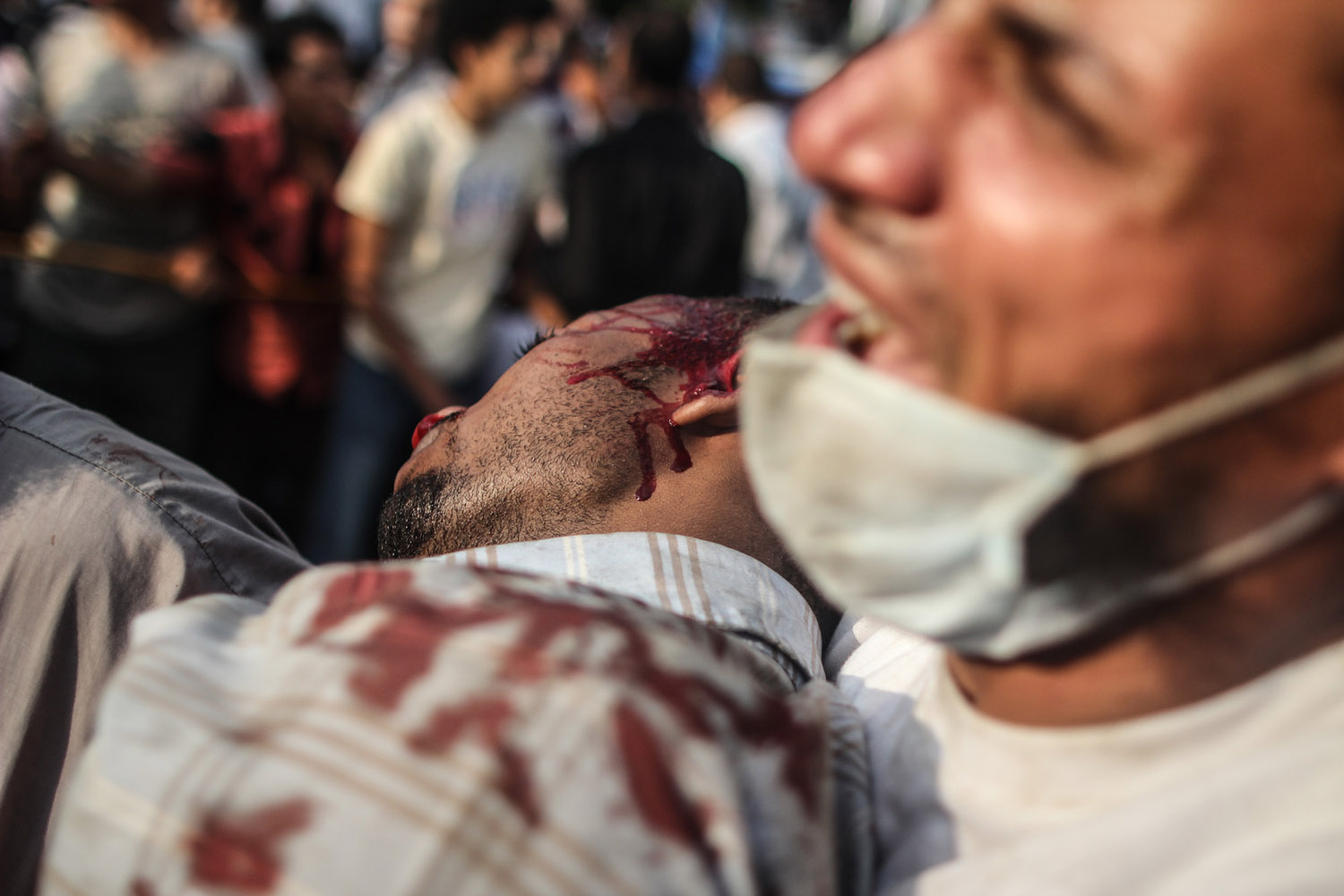
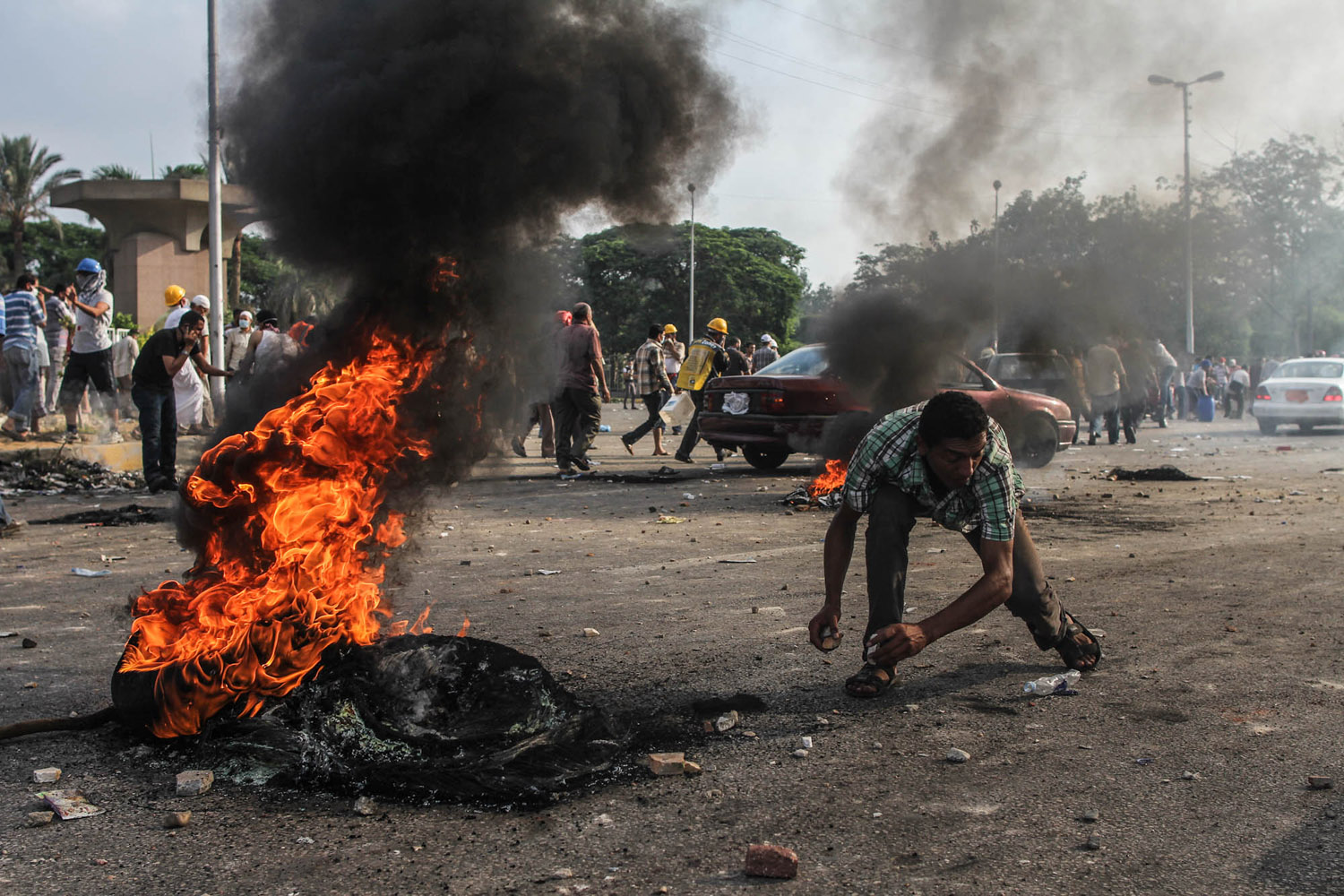
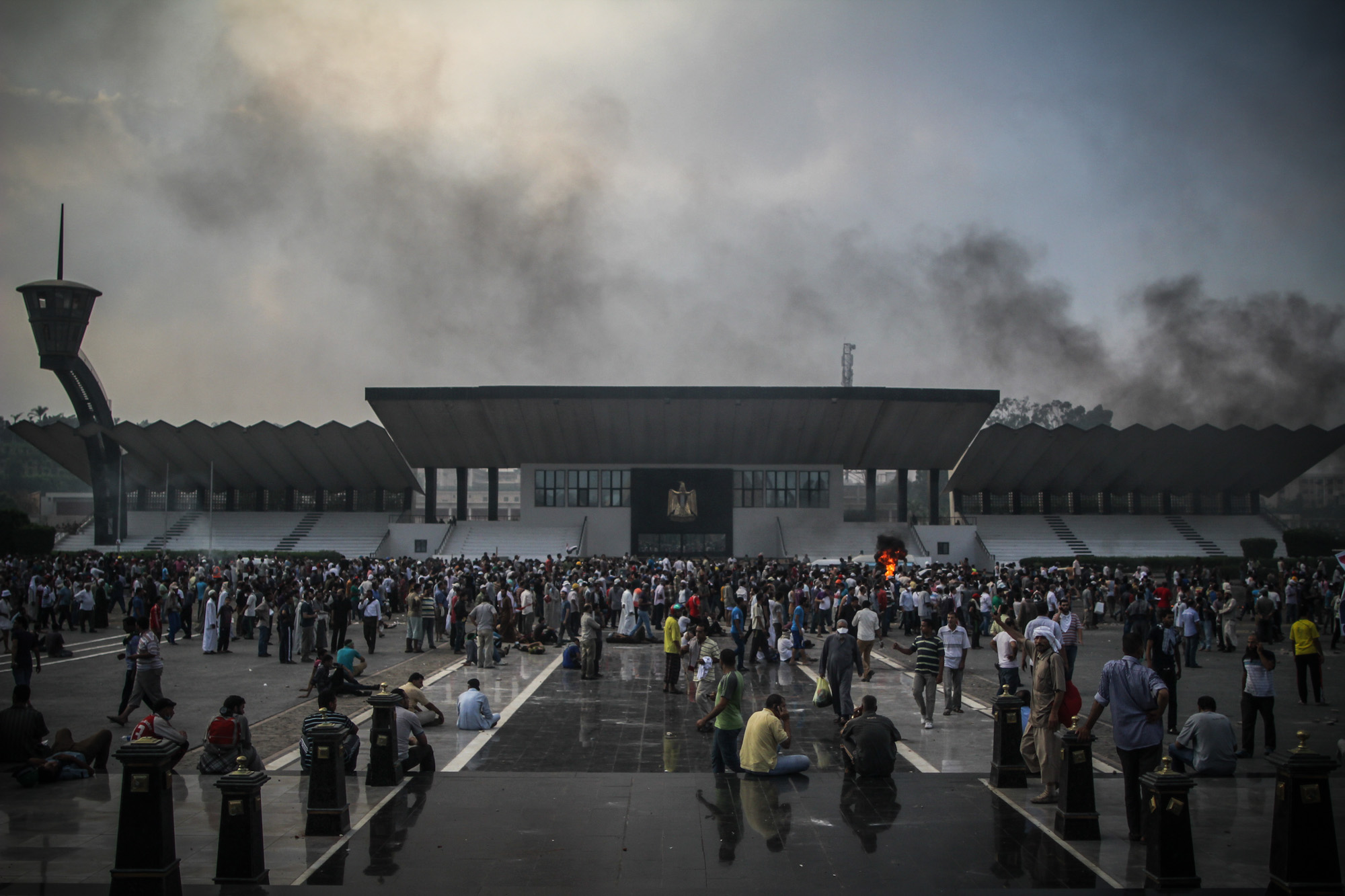




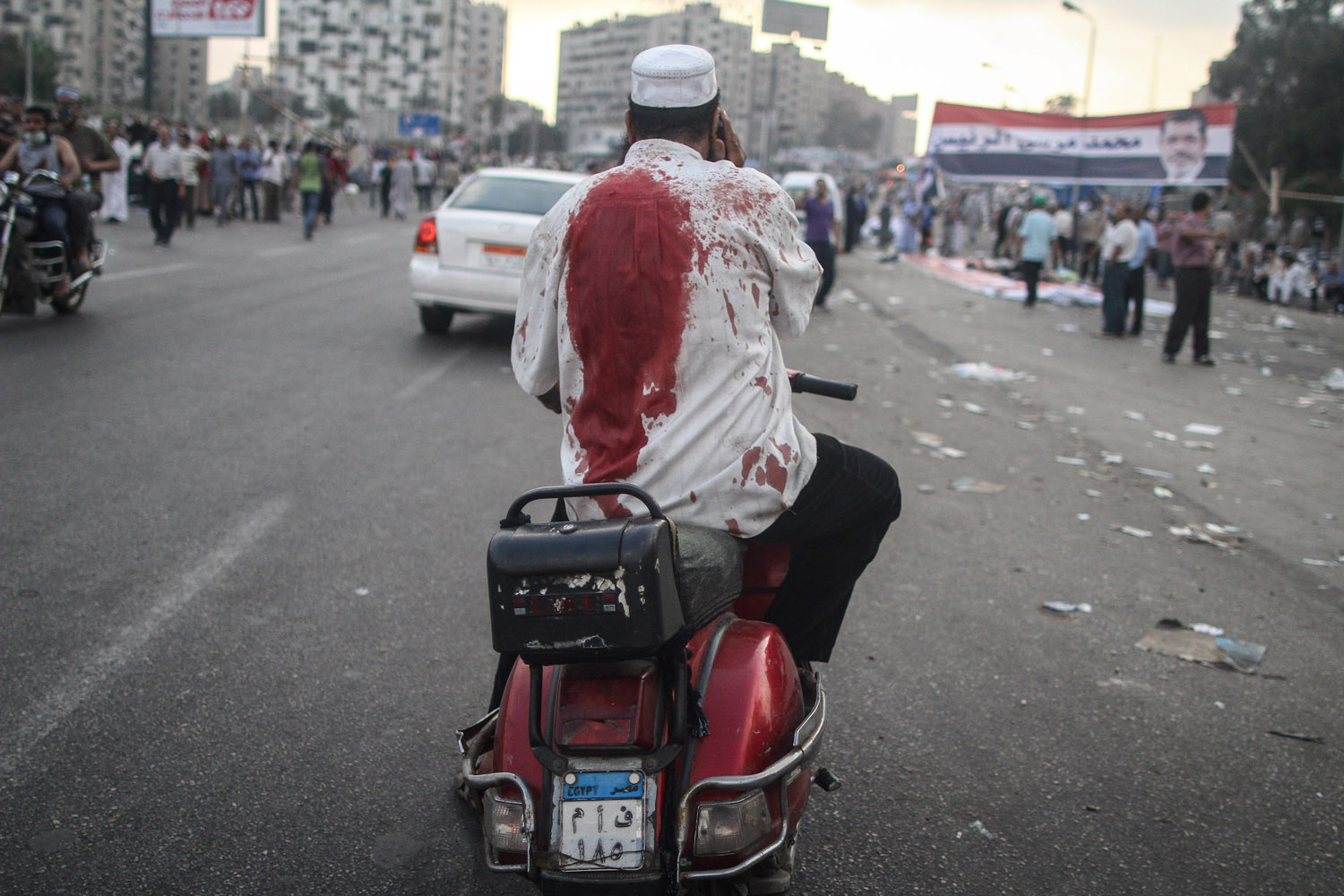


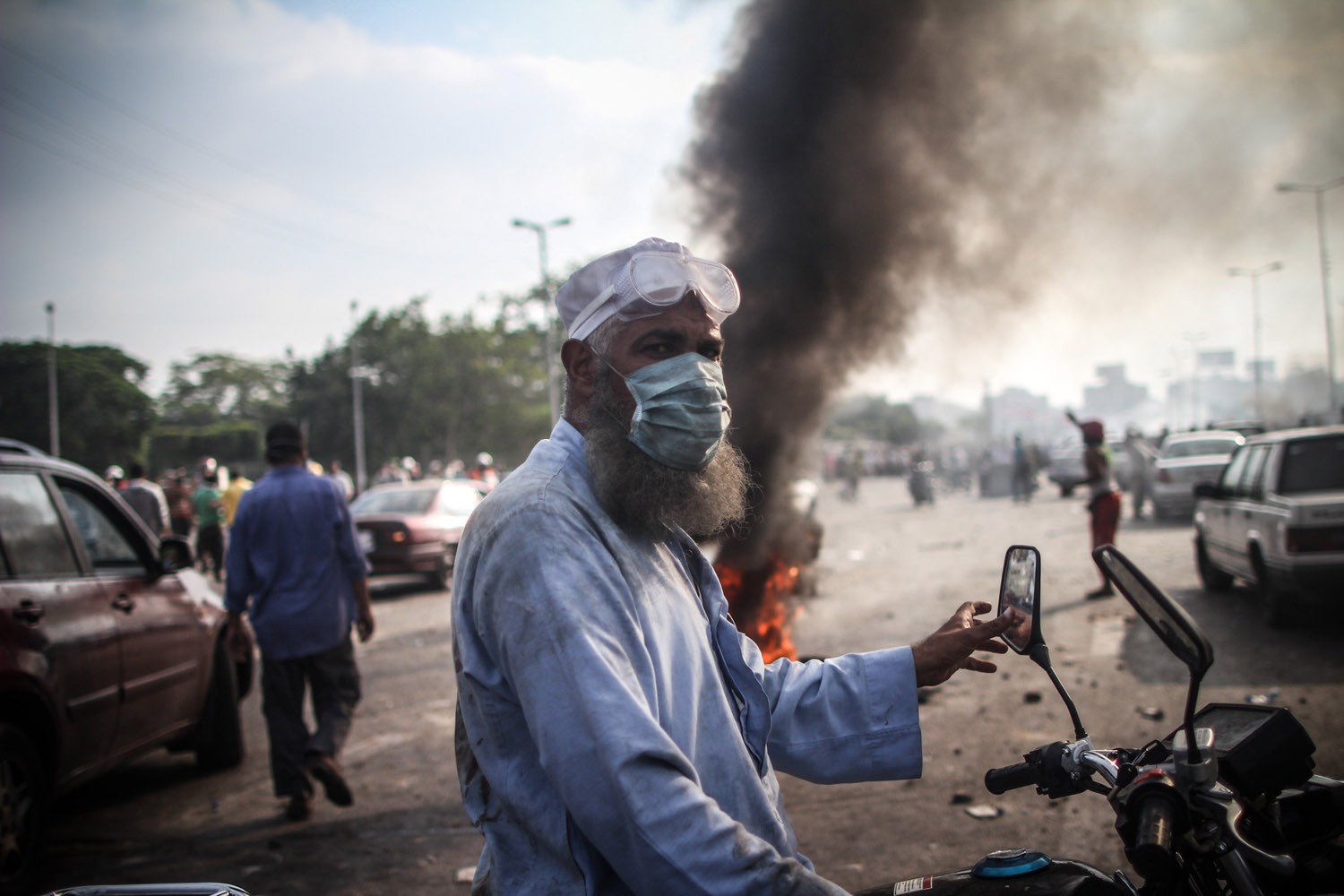

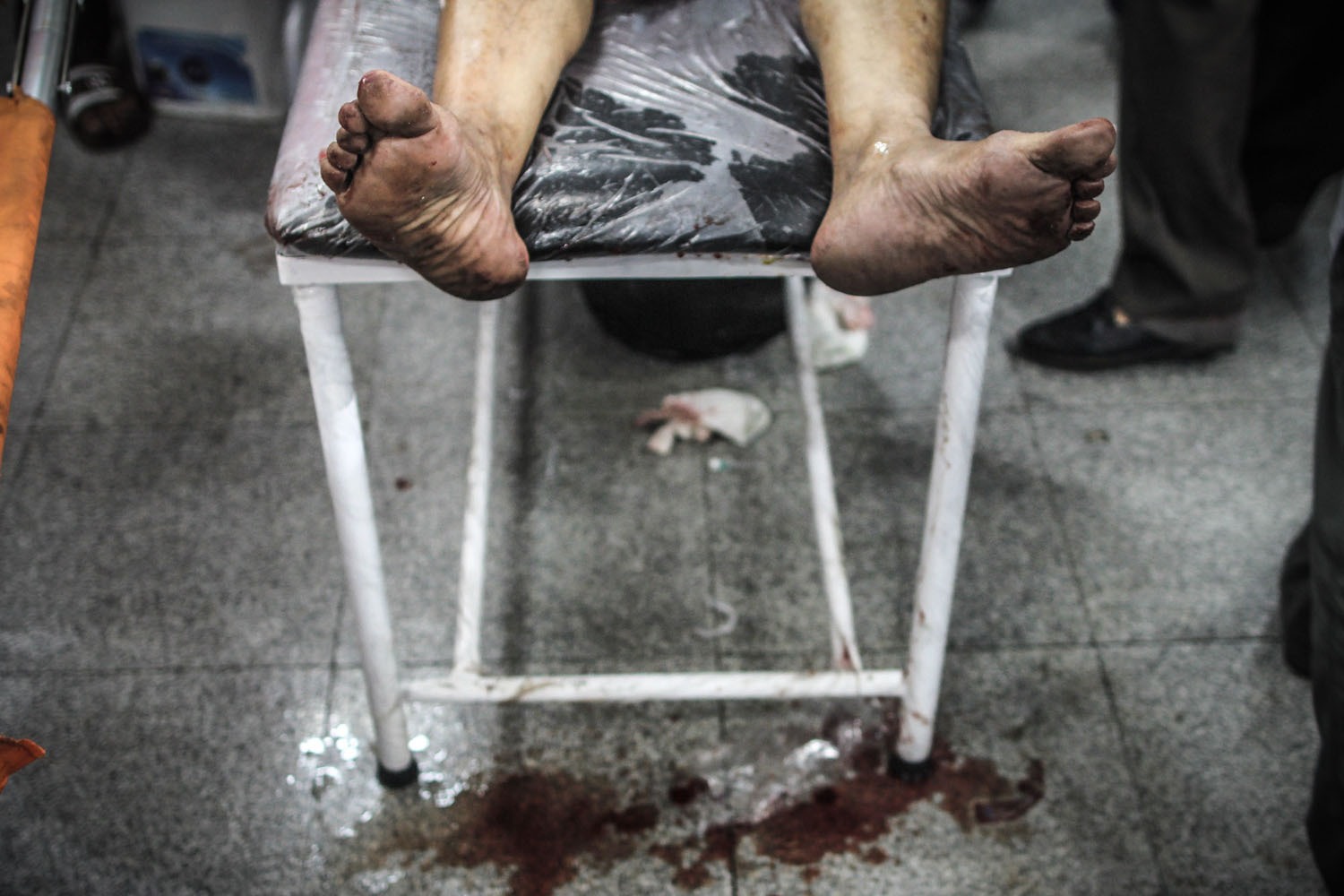
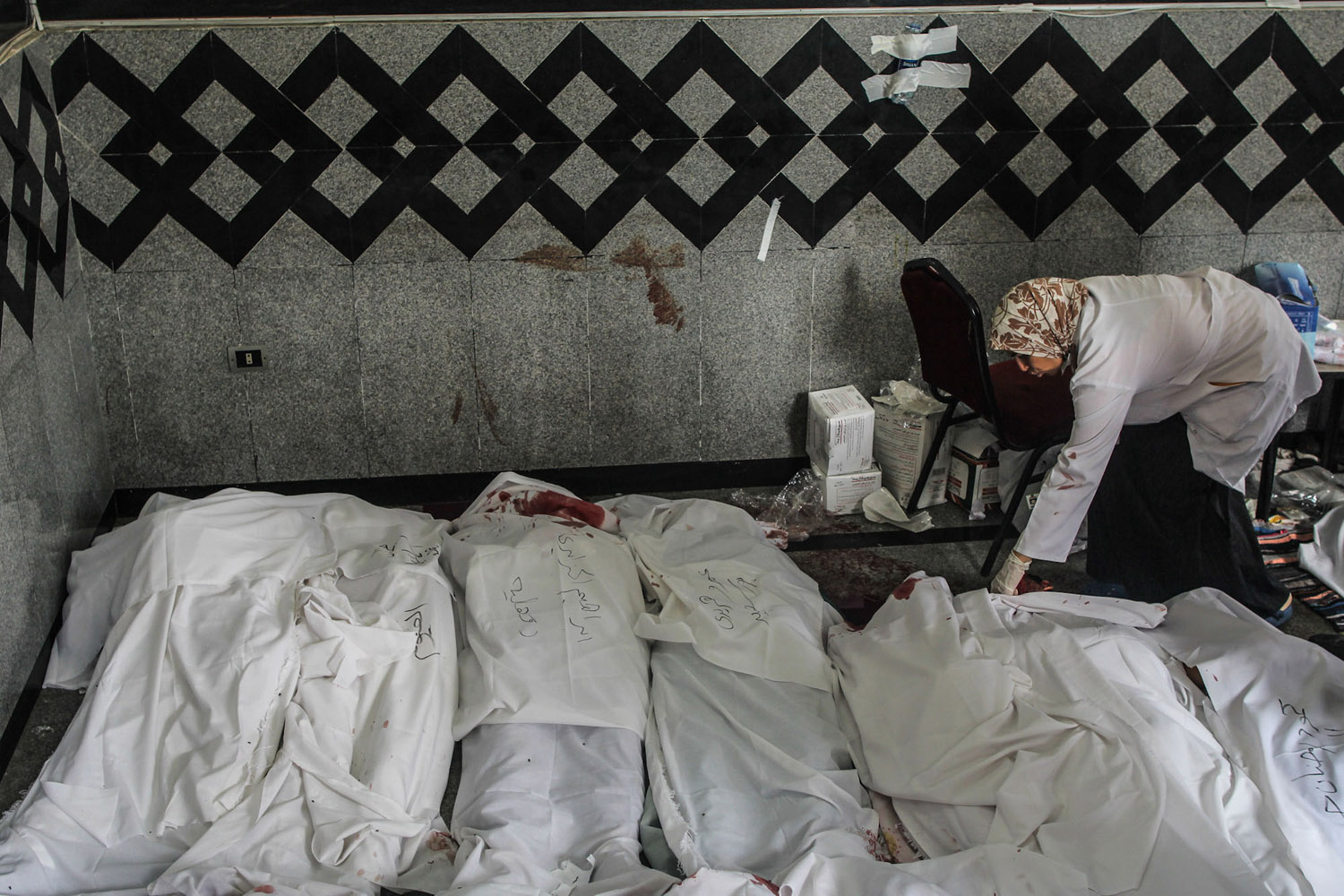
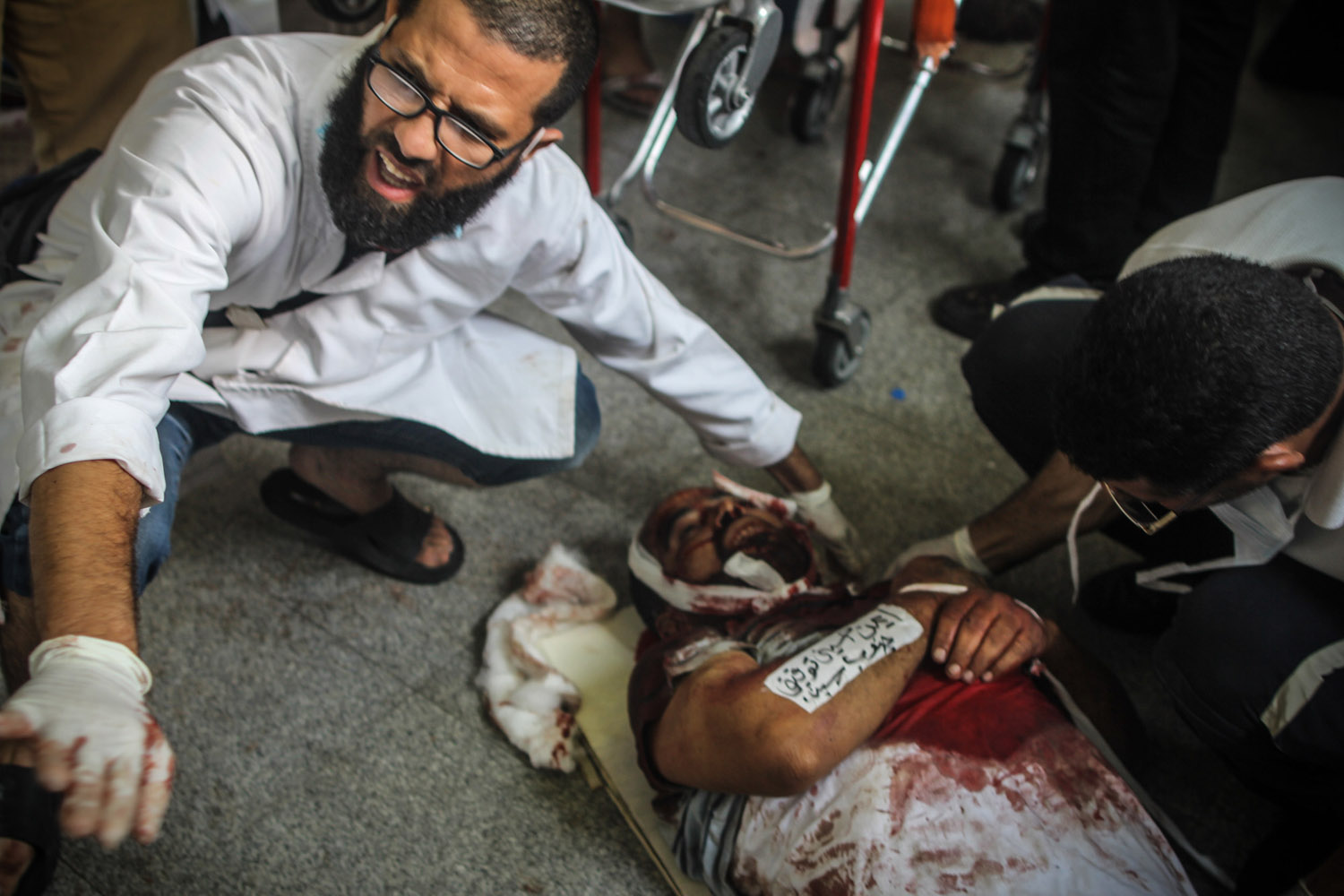

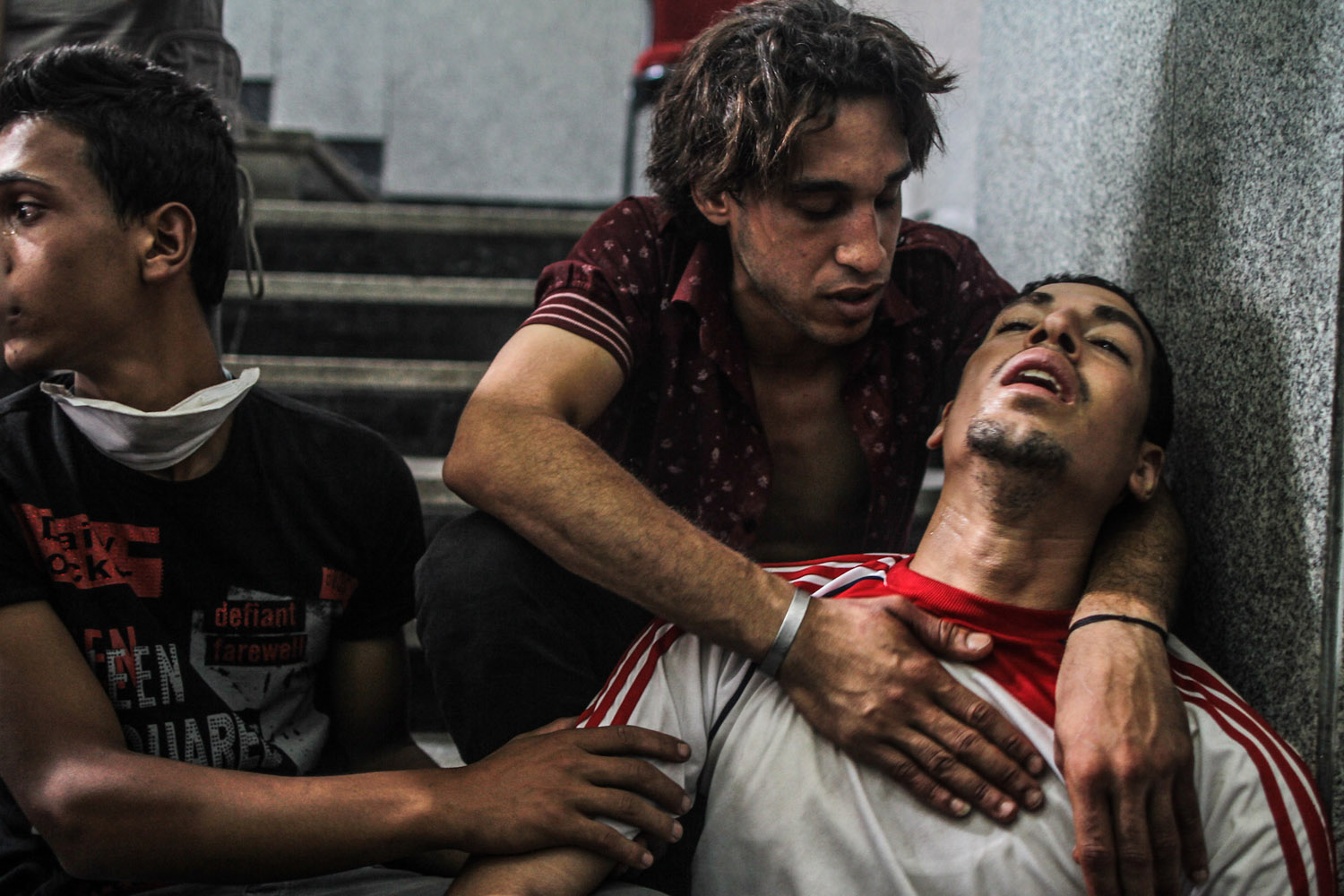
More Must-Reads from TIME
- Why Trump’s Message Worked on Latino Men
- What Trump’s Win Could Mean for Housing
- The 100 Must-Read Books of 2024
- Sleep Doctors Share the 1 Tip That’s Changed Their Lives
- Column: Let’s Bring Back Romance
- What It’s Like to Have Long COVID As a Kid
- FX’s Say Nothing Is the Must-Watch Political Thriller of 2024
- Merle Bombardieri Is Helping People Make the Baby Decision
Contact us at letters@time.com